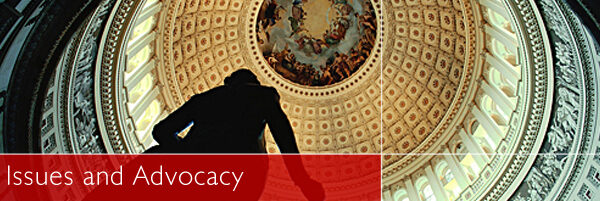Anecdotal reports from some members appear to be indicating that some elements of the engineering economic sector are returning to life. That is a wonderfully positive sign, and hopefully will be a portend of future continued expansion. But there is no denying that hard times are still here for many, and with it some unique situations unfolding.
A part of services provided by some licensed professional engineers involves reviewing and analyzing plans for a variety of projects wherein the plans have been prepared by a third party. Today’s economy has many such plans being prepared by contractors who plan to build or alter buildings owned by their customers. It is safe to say that the practice is not only common, but is becoming increasingly frequent. Doing so has the potential to avoid the use of licensed building design professionals for services that may be costly to an owner. Often these services are architectural. It is not our intent here to offer an opinion on the practice, but to discuss its legality.
In my region, local architects are clearly experiencing a significant downturn in work, and with it a drop in income. For the few projects that are moving forward, many involve plans drawn by contractors to reflect the wishes of their customers. And many of these plans land on the desks of licensed professional engineers for some type of review and ultimately application of a PE seal. Even my early years in private practice saw this as a common part of the work of small consulting engineering firms, including many involved in building inspection engineering.
There are both ethical and legal implications involved with applying your seal to plans not prepared by you. In New York a part of state law covers such situations as shown below. Edits have been made for ease of reading.
Sealing Work Prepared by Others
The rules address unprofessional conduct in all professions regulated by the Board, and Part 29.3 specifically addresses conduct in the design professions of engineering, architecture, land surveying and landscape architecture, with Part 29.3(a)(3) and (4) addressing the sealing of work prepared by others.
Situations where this might be considered appropriate would include, but not be limited to:
- Construction documents prepared by an owner or his unlicensed employee, where the proposed project is to be built for the owner, not for a third party.
- Construction documents owned by an individual, such as those purchased through the mail from an out-of-state business entity. Frequently these would be plans for a house or pre-engineered building for the purchaser’s occupancy. Such documents must be reviewed by a professional engineer as described below and made site-specific. Depending on the condition of such documents after the review (i.e., clarity after all revisions or additions have been made), the professional engineer shall incorporate such documents into the set of documents to be submitted to the appropriate authority, and it shall be signed and sealed by the professional engineer. Before a building is built, the plans must be thoroughly reviewed and the plans sealed by a professional engineer or another authorized professional. Written documentation must be retained for a period of six years.
- Engineering documents prepared by a corporation for franchisees, such as fast-food chains. In such case the documents shall be reviewed by a licensed professional engineer as described below and made site-specific. All safety-related aspects should be clarified, and all necessary site work information should be clearly provided.
- Engineering documents for prefabricated and pre-engineered devices and structures may also be reviewed and sealed by licensed professional engineers. In the review process the professional engineer is responsible for verifying that the device or structure has been designed to meet or exceed the code requirements for the particular site on which the device or structure is to be used or erected. Typically the professional engineer or his/her consultants may provide the necessary site specific design work for the project.
- In those instances where an unauthorized individual or firm has rendered engineering services in this state to a client for a project in this state, and a licensed professional engineer subsequently becomes aware of the fact, such professional engineer should report the incident to the Education Department such that an investigation of the unauthorized practitioner might be conducted.
The rules require that when a licensee reviews work prepared by others, a thorough written evaluation of the work must be prepared and retained by the licensee for a period of not less than six years. This report shall include and address:
- A thorough written evaluation of drawings and specifications; reports; design calculations and references to applicable codes and standards against which the work was checked.
- The report shall identify the common name of the project; owner of the project and/or the client; the preparer of the documents; date of evaluation; documents reviewed, with listing of dates of issue.
- Conformance with applicable codes including, but not limited to: town, city, state and federal codes; appropriate professional standards (ASME, IEEE, ASTM, etc.).
In signing and sealing work prepared by others, the licensee may correct, alter, or add to the existing documents or prepare additional documents to address items found inappropriate or missing. When the documents meet the appropriate standards, they may then be signed and sealed by the licensee. A licensee who seals and signs the documents may be seen as accepting all responsibility for the work as though the licensee had personally prepared all documents.
When the scope of review is limited work to individual aspects of the work, the licensee should indicate this by noting such on the sealed and signed documents.
Alterations to Work
All plans, specifications, and reports to which the seal of a professional engineer has been applied, must also be stamped with appropriate wording warning that it is a violation of law for any person to alter a document in any way, unless acting under the direction of a licensed professional engineer. If a document bearing the seal of an engineer is altered, the altering engineer shall affix to the document their seal and the notation “altered by” followed by their signature and the date of such alteration, and a specific description of the alteration.
Otherwise known as “plan stamping” many professional engineers have supplemented their practice revenues by incorrectly engaging in the practice. As detailed above, there are provisions in NABIE’s home state of New York for providing such services and doing it in compliance with the law. Under such circumstances it is clearly not plan stamping. However, your engineering services must meet the tests detailed above.
As small business owners we must make daily decisions about our markets, our revenues, and how to sustain our practices. I personally have had many conversations with local architects about professional engineers engaged in what the architects believed was plan stamping. While each case would require specific review, New York’s law addresses the issue. A PE or even a licensed architect interested in stamping someone else’s plans after an appropriate review is afforded state guidelines on how to do so.
If such work is a part of or may become a part of your practice, check the regulations in your state before proceeding. Also evaluate the practice in light of ethical considerations. Lastly, evaluate the relationship you have with other licensed design professionals. If some of your engineering work has come from architects who have needed your assistance when times were good, you may need to take the measure of sealing work from others that is competing directly with the architects with whom you did business with in the past.
*This article had been posted in the Winter 2010 edition of The Examiner.


